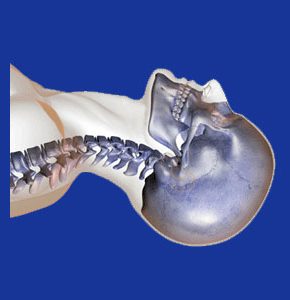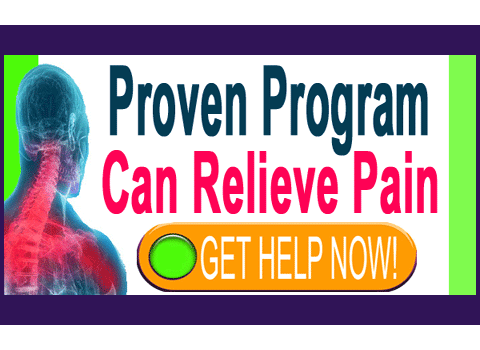
Cervical traction is a traditional form of immobilization and decompression therapy most often used after traumatic injury to the neck. Traction has been used as a mainstay treatment for literally thousands of years in various forms, as well as a method of torture and/or execution, as well. This dark side of traction is very revealing as to its fundamental flaws as a medical modality.
There are many products and services that are considered part of traction treatment, including a range of neck braces, bed-ridden weight and pulley systems, inversion systems, spinal decompression systems and a variety of home-use care practices. Some indications for specific types of traction are warranted, while others border on the ridiculous. Traction has certainly fallen out of favor as a medical modality, with only select examples of treated conditions going against this general rule.
This report examines the reasons why cervical traction is prescribed, the goals of treatment and the warnings for patents who might be subjected to this cruel therapy needlessly.
Cervical Spinal Traction Practices
There are several forms of traction that can target the cervical spinal anatomy. Some methods may be used for treatment of virtually any injurious or compressive health issue residing in the region, while other practices might only be indicated for highly specific diagnostic parameters:
Neck braces might full immobilize the neck and might also attempt to recreate the spaces between compressed vertebral bones. Braces come in many styles and may also be useable with weight and pulley systems for additional decompression benefits.
Bed-ridden weight and pulley systems qualify as traditional traction and usually keep the patient confined to bed, attached to cables, weights and orthotics in order to focus effort on decompressing the neck and preventing any significant movement of the cervical spine.
Inversion systems can be professionally applied, but most are designed for home use. These products hang the patient upside down to a slight or complete degree, in order to counteract gravity and use the weight of the body to decompress the spine. Exponents of inversion claim many health benefits, including pain relief, when using this approach to care.
Modern spinal decompression systems use computer-controlled machinery to decompress individual and highly selectable regions of the spine, including any of the cervical spinal levels. Some of the most popular systems include the DRX9000C, the AccuSpina, the VAX-D and the Antalgic Trak devices.
Home-use neck pain products are virtually always viewed as scams by medical providers, since most consist of nothing more than crude neck straps and hanging apparatus, plastic massage simulation devices, or products designed to decompress the cervical spine when used as a pillow or exercise device. Consumers are cautioned that virtually none of these products are proven to be effective and some might be incredibly dangerous.
Spinal Traction Indications
Traction of the cervical spine is used for 2 distinct, but often related purposes. The first is to immobilize the spine and prevent the patient from moving the individual levels of the cervical vertebrae. The second purpose is to decompress the individual levels of the cervical spine, helping to remove pressure from potentially compressed neurological tissues of the spinal cord or spinal nerve roots.
Traction can be prescribed for all of the following common scenarios, as well as other less often seen conditions and disorders:
Acute neck injuries often warrant spinal traction to immobilize the region against further trauma, reduce inflammation and decompress neurological tissues. Bed-ridden traction is usually applied in cases of truly catastrophic damage to the neck, while neck braces are usually used for significant, but less dire examples of neck trauma.
Some extreme types of spinal stenosis might be indicated for traction in order to prevent neurological injury prior to, or instead of, surgical treatment. Treatment choice varies greatly depending on many factors, but may include bed-ridden traction, spinal decompression or brace application.
Some osteoarthritic processes and intervertebral disc pathologies can be successfully treated using spinal decompression therapy, although other forms of traction are generally not indicated for these common conditions. The use of bed ridden or neck brace traction for these spinal irregularities is not advised.
Some autoimmune diseases and other types of disorders can be managed using various type of traction as part of the care regimen. The types of traction utilized range, depending on the individual needs of the patient and their diagnosis.
Cervical Traction Editorial
Bed-ridden traction is not a good long-term solution for any health issue, since it is restrictive, uncomfortable and causes progressive deficits in muscular strength over time. Doctors now know that immobilization traction is counterproductive when used for more than a week or 2. This is why enlightened medical systems have discontinued the use of traction for all but the most severe and indicated types of injuries and conditions. The same holds true for many neck braces which utilize complete immobilization, although these uses are still far more commonplace, especially after massive neck trauma or following certain surgical interventions. Both of these traction methods are still utilized extensively in underdeveloped medical markets, such as in third world countries.
Spinal decompression offers convenient, painless traction that is specifically targeted to conditions in the cervical spine. This approach to care offers excellent results for intervertebral disc pathologies, and acceptable results for osteoarthritic sources of neck pain and neurological dysfunction. Decompression therapy allows many patients with chronic neck pain symptoms to find cures without undergoing the hazards of surgery.
Inversion has many supporters, but also has many opponents, making it a controversial choice as a neck pain treatment. Furthermore, inversion is least successful for neck pain, since the weight of the head might not be enough to significantly decompress the region, especially when the person is only partially inverted. Additionally, inversion does demonstrate some serious health risks to particular patient demographics, so its use should always be discussed with a doctor before beginning treatment.
Home-use decompression and immobilization cervical traction products are scams in almost every case. These products are marketed towards desperate people who want a (usually relatively) inexpensive solution for lasting pain. We have seen many products that would be objectively considered humorous, if it were not for the stark reality that the companies producing these devices are literally stealing people’s money and providing them with potentially dangerous tools for self injury in the process. Our advice is to avoid these scams universally, but if you do insist on purchasing one, at least clear it with your physician first.





